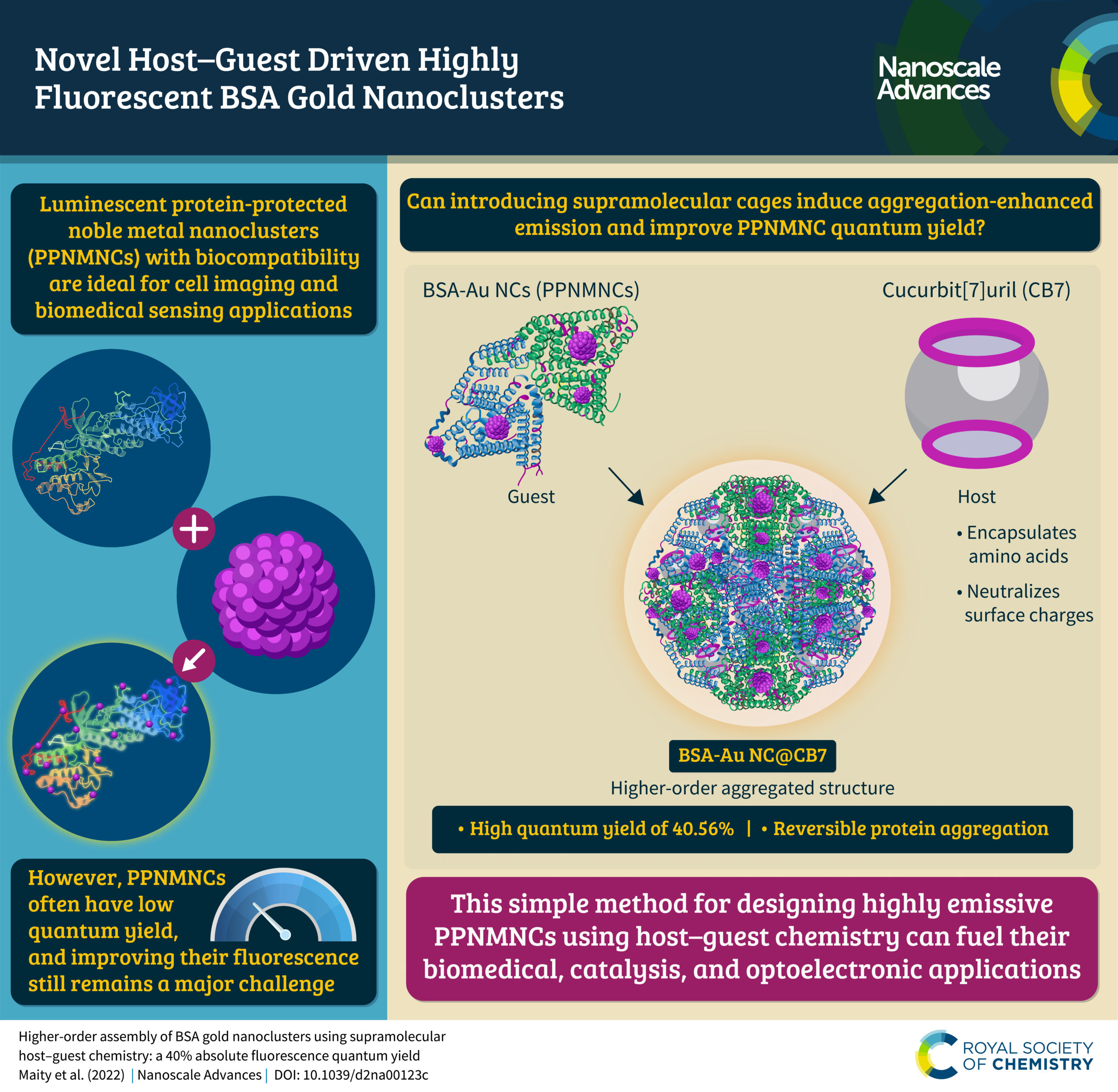An infographic highlighting new protein-protected noble metal nanoclusters
Higher-order assembly of BSA gold nanoclusters using supramolecular host–guest chemistry: a 40% absolute fluorescence quantum yield
Anjan Maity* and Atul Kumar
Nanoscale Adv., 2022, 4, 2988-2991, DOI: 10.1039/D2NA00123C

Meet the authors
 |
Anjan Maity was born and brought up in a village named Naguria, just beside the Rupnarayan River in Purba Medinipur in a humble farmer’s family. From childhood, he had the vision to contribute to society and propel his country in the right direction by becoming an IAS officer. But, life directed him on a different path, and he have become a prolific researcher in the chemical science community. He pursued his B.Sc. in Chemistry (Hons.) from Vidyasagar University, followed by an M.Sc. in Chemistry at the Indian Institute of Technology, Kharagpur (IIT-Kharagpur) securing all India rank (AIR) 62 in IIT-JAM examination. He had multiple brief research stints at the Indian Institute of Technology, Kanpur (IIT-Kanpur), Indian Institute of Technology, Guwahati (IIT-Guwahati), JNCASR-Bangalore, and National Chemical Laboratory, Pune (NCL-Pune). Finally, he joined as a Ph.D. scholar at the Indian Institute of Science, Bangalore, India, in January 2020 with the support of a UGC fellowship securing AIR 24 in the National Eligibility Test (NET). He worked under a prestigious Ph.D. fellowship (Prime Minister’s Research Fellowship, PMRF, Ministry of Education, Government of India). His research is purely experimental in nature and based on the synthesis and characterizations of protein-protected gold nanoclusters, tuning its optoelectronic properties by utilizing supramolecular host-guest chemistry and further utilizing it in biology.
Apart from research, he studies music, is an avid music listener, and loves playing the violin. |
a) What aspect of your work are you most excited about at the moment and what do you find most challenging about your research?
It is a biocompatible fluorescent molecule that can be utilized in biological applications. The most challenging task was synthesizing the CB7 molecule and designing the higher-order assembly.
b) How do you feel about Nanoscale Advancesas a place to publish research on this topic?
Nanoscale Advances is a gold open access journal. Because of this, my work visibility and citation will be much higher. Moreover, since my work is more advanced in this topic of BSA gold nanocluster, so, I feel it is perfect for my work.
c) Can you share one piece of career-related advice or wisdom with other early career scientists?
This is an excellent research area not only in academia but also will help to get a position as a scientist in various industries.












